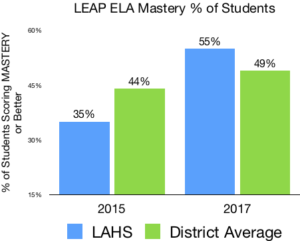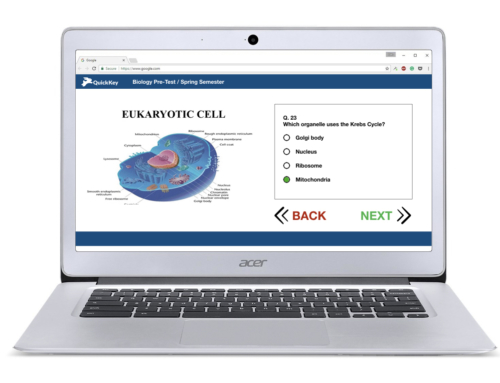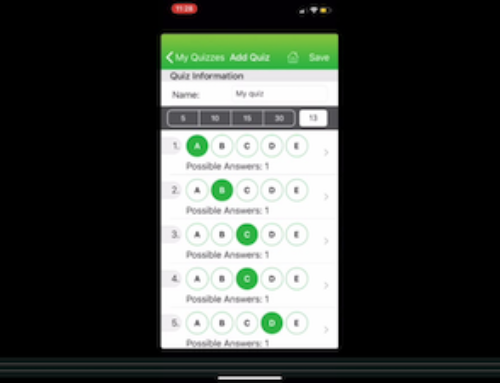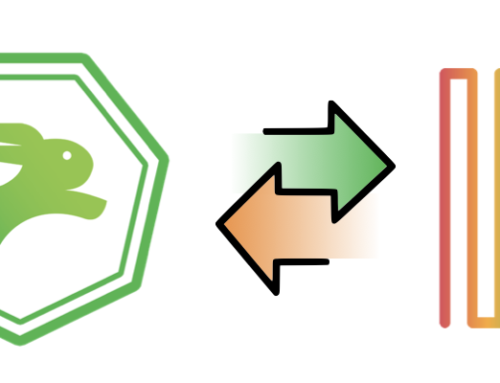Before Becoming the Top Performer in its District, This School Had to Review How Data Was and Wasn’t Shared in PLC Teams.
Lake Arthur High School had been doing Response to Intervention (RTI), PLC, and Tiered Instruction techniques ever since their new principal Amanda Fontenot joined the team a few years ago. The system was working reasonably well, but Lake Arthur was still in the middle of the league tables in its district. A few simple changes in the 2016-17 school year changed all that, however, and after Lake Arthur’s students took the state exam in the spring of 2017, the school rocketed to the top of the district in terms of both proficiency and level of improvement.
This case is an example of how you can achieve the same impact in your school.
 “…Eventually, we looked at the data reporting our teachers were actually using – and how – during PLC meetings. It turned out most teachers were having a hard time. After talking to the teachers we found that the assessment tool provided by the district wasn’t easy enough to use in such a rapid and frequent setting as PLC. Since there is a number of budget-friendly tools on the market purpose-built for rapid real-time assessment, we tried one. It made a huge difference. Yes, we paid some money for ‘duplicate’ functionality… but in reality, we got what the district-provided assessment tool couldn’t offer: fast and easy feedback and data sharing among teachers. Getting the data into a usable format transformed our RTI process, and our PLC meetings became meaningful. At last, we saw significant quantifiable improvements in student achievement.”
“…Eventually, we looked at the data reporting our teachers were actually using – and how – during PLC meetings. It turned out most teachers were having a hard time. After talking to the teachers we found that the assessment tool provided by the district wasn’t easy enough to use in such a rapid and frequent setting as PLC. Since there is a number of budget-friendly tools on the market purpose-built for rapid real-time assessment, we tried one. It made a huge difference. Yes, we paid some money for ‘duplicate’ functionality… but in reality, we got what the district-provided assessment tool couldn’t offer: fast and easy feedback and data sharing among teachers. Getting the data into a usable format transformed our RTI process, and our PLC meetings became meaningful. At last, we saw significant quantifiable improvements in student achievement.”
— Amanda Fontenot, Principal, Lake Arthur High School
How RTI and Tiered Instruction Work at Lake Arthur High School
The 25-minute RTI period is a daily opportunity to work on specific areas where students need help. To sort students into the proper RTI period class, core and non-core teachers were paired together to work toward one common goal: increase student performance on state testing. Core teachers would create short formative assessments that addressed a specific skill or standard, and their non-core team teacher would administer the exam, grade it, and then create an excel spreadsheet that they would then share with the core teacher. The core teacher would then collaborate with the other core teachers to create rosters for an RTI period for that week. This was the second tier of their Tiered Learning plan, and it was shown to be effective at catching students back up to the rest of the class, albeit with great effort and not with 100% accuracy.
The Challenge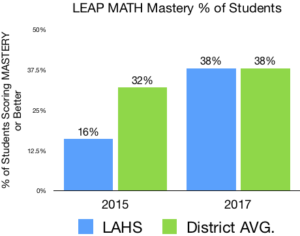
With six grade levels (7th through 12th) and 412 students, one of the biggest challenges is gathering the needed data each week, then analyzing the data in order to divide the students into groups and plan unique RTI curriculum for each one. The time it took non-core teachers to grade all the formative assessments took too long, and the resulting data still needed to be put into a spreadhseet that was useful to the Core Teachers. Moreover, Core Teachers still had a hard time sharing their data with their department and other grade-level teachers.
Furthermore, there wasn’t much time left to deploy the third tier of Lake Arthur’s Tiered Instruction plan: one-on-one tutoring.
Overcoming the Challenge: One Simple Change
To make the Tiered Instruction and RTI process more effective and less time-consuming, Principal Fontenot and her teachers started using Quick Key’s mobile paper quiz grader, Quick Key Mobile for Apple and Android devices. using Quick Key, non-core team teachers could now administer common formative assessments instantly grade them on their mobile devices. Excel reports with all the needed itemization, standards tracking, and mastery data were automatically generated by Quick Key. Data analysis and sharing became much easier, smoothing out the RTI process into something manageable, that could succeed.
Immediate and Long-Term Benefits of Better Data for Tiered Instruction and RTI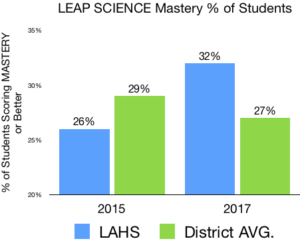
Immediately, each teacher saved instructional time, several hours per week of hand-grading and reporting time. Overall, the feeling among teachers and students was that the logistical benefits of using Quick Key made the entire RTI process much more effective. No loss of precious instructional time in a core classroom was lost by having to assess and reteach a skill that 75% of the class had already mastered.
And there was another benefit: Quick Key’s Itemization Report for each quiz made the RTI periods far more effective at addressing students’ academic needs. The reports were also used to guide Lake Arthur’s PLC meetings. From the Quick Key data, core teachers were able to pull only the students who had not mastered the skill or standard into a small group during RTI and provide small group intervention.
Also reported on the Louisiana Believes website is Lake Arthur High School’s growth in proficiency in grades 7-8 from 2015 to 2017. Since implementing Quick Key LAHS has experienced some of the highest growth in the state in students scoring Mastery and Advanced on the LEAP assessment, improving 17% in ELA, Math, and Science combined.
How to replicate these gains in your school
PLCs are awash in data from frequent assessments. But how much of these data are actually being used? Principal Amanda Fontenot, whose school is now the top performer in its district, recommends principals survey teachers how what data they actually use and share.
Some key questions to ask your PLCs:
-
What reports do you print up before your PLC meeting?
-
Do other members of your PLC bring the same reports?
-
Does your team leader or coach possess any roll-up data for everybody in the PLC? If not, why not?
-
Are you tracking standards in your reports?
-
What information do you wish you had after your PLC meeting?
Is your technology helping you do what you need to do with student data for Tiered Instruction, learning, and RTI? This checklist can help you determine if you are getting everything you can get from your technology.
